35 DIY Bunk Bed Ideas
Adding a bunk bed to your child’s room is a great way to maximize space and is super helpful if you have multiple kids sleeping in the same room. Not to mention, what kid doesn’t love a cool bunk bed?
There are countless options out there but by building a bunk bed yourself, you can create something custom to your exact needs. Add in the fact that if you build a bunk bed using Kee Klamp fittings and pipe, the bunk bed can be disassembled to use the fittings for another project.
For example, the bed could be converted into a loft or the entire bed frame could be disassembled and the fittings used to build a shelving unit, desk frame, or any other type of project you can think of. This means that the bunk bed doesn’t have to go to waste or be sold when your child outgrows it. Just break down the structure and use the fittings to build something else!
With that said, building your own bunk bed doesn’t have to be difficult. Using just an Allen Wrench or a hex key, you can assemble a bunk bed built with Kee Klamp fittings in just a few hours or less. So really, the hardest part is deciding exactly what type of design you want to build.
To help you make that decision and inspire your next project, we’ve compiled a list of over 30 DIY bunk bed ideas. Take a look:
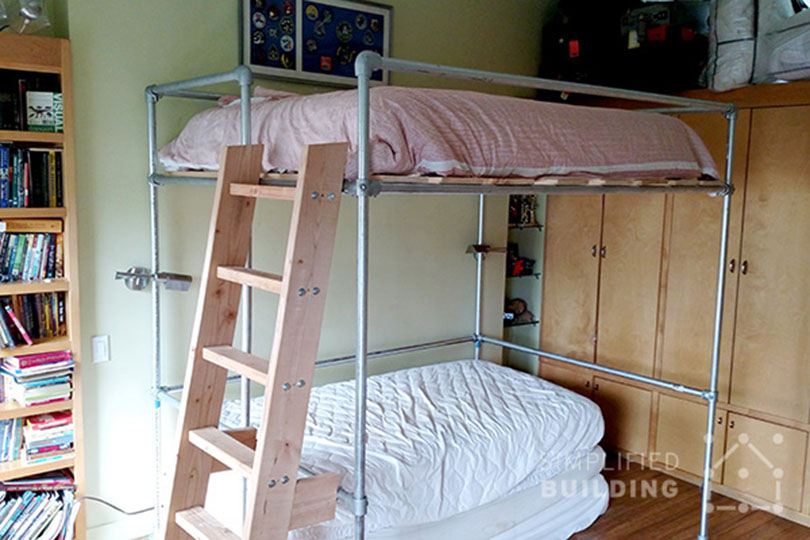
This bunk bed, built by Justin from Brooklyn, NY, features a loft-style design. The bed on the ground is not permanently fixed to the bed frame. So it can be pulled out and removed should Justin or his children ever want to convert the bottom section into a desk or storage area.
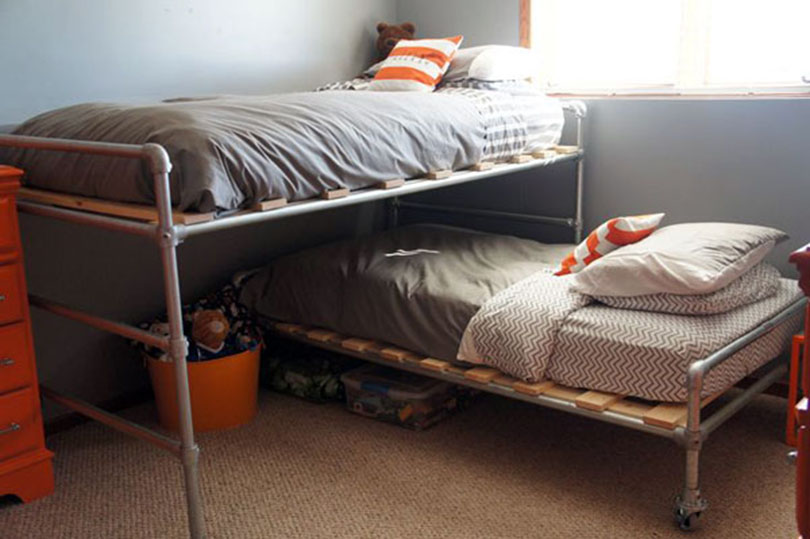
This bunk bed design uses two separate bed frames to create a perpendicular setup. The bottom bunk uses casters so that it can be easily moved around the room should the parents or children ever want to switch up the layout.
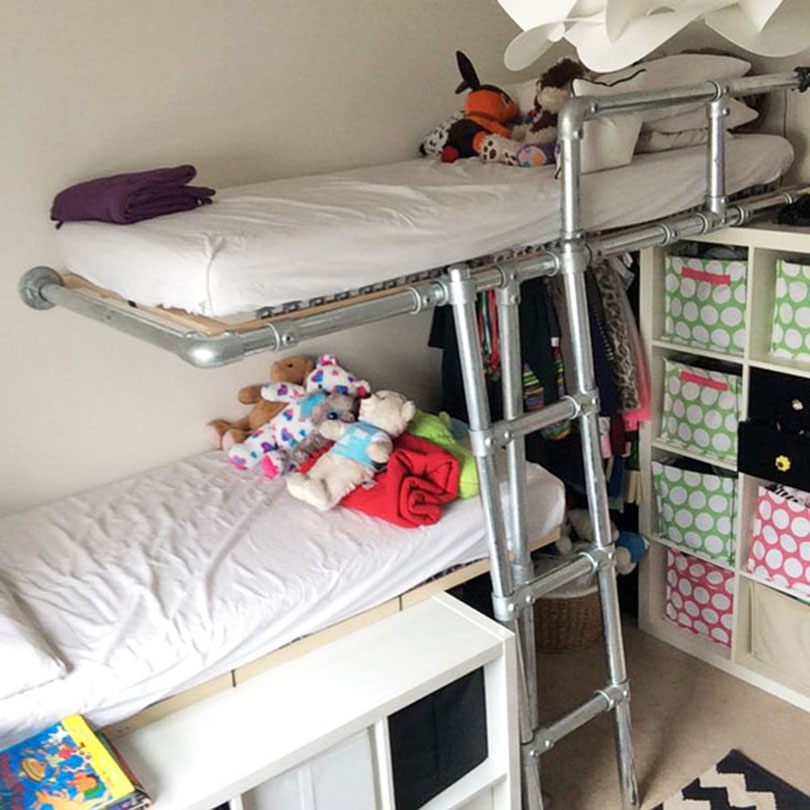
This design features a top bunk that is mounted to the ground and wall, while the bottom bunk is simply placed on a storage cubby. This setup provides additional storage and allows for some flexibility for positioning the bottom bunk.
If you decide to build a bunk bed like the design above, make sure that the Flange fittings mounted to the wall are attached to a stud. This will ensure that the structure is secure and has proper support.
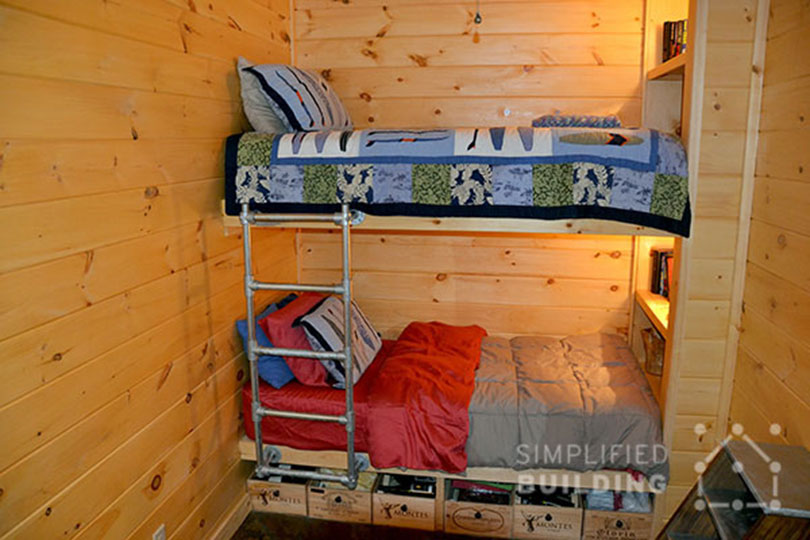
This bunk bed was built by Alex for his cabin in North Carolina. The bunk bed features a “built-in” design that makes use of a pipe-built ladder. To build a ladder just like the one Alex built, you will need four Flange fittings, four 90 Degree Side Outlet Tee fittings, and six Three Socket Tee fittings.
Alternatively, you could Single Socket Tee fittings in place of the Three Socket Tee fittings.

While this design isn’t quite a bunk bed, it very well could be. Instead of the storage below, a bed frame could be added to complete the setup. In any case, this custom flying saucer design makes use of Swivel Flange fittings to create the individual rungs that run along the middle of the bed.
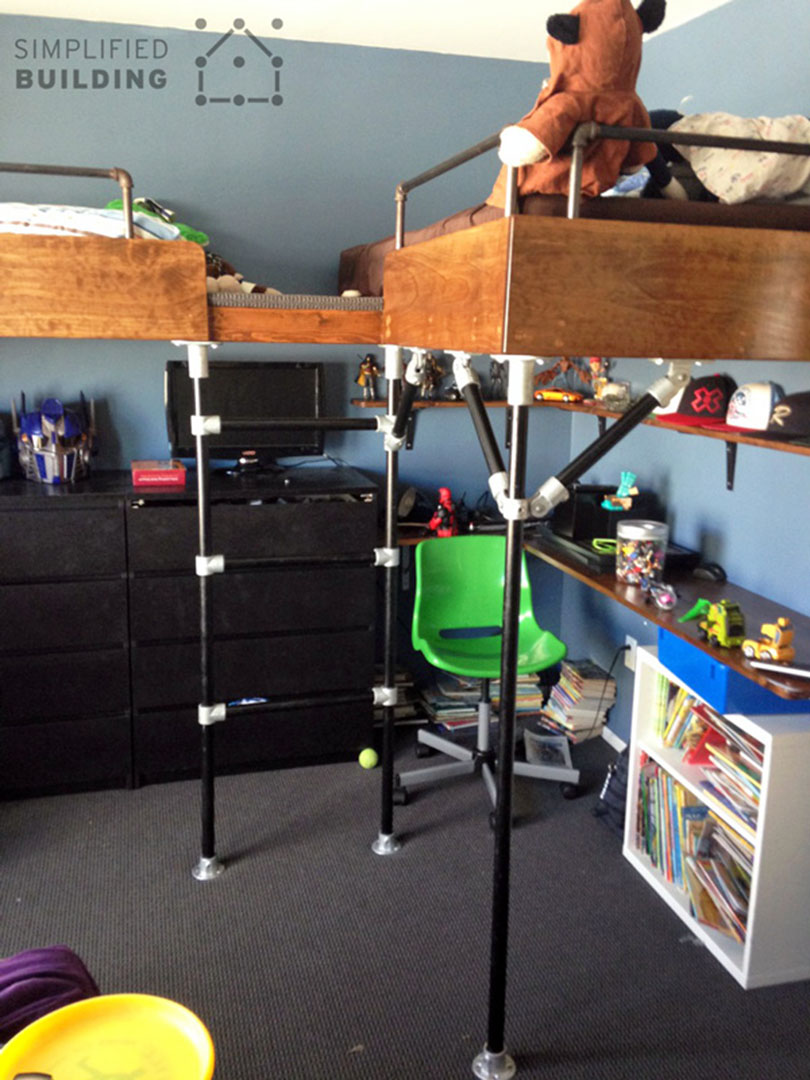
Again, not quite a bunk bed, this loft-style bed frame could easily add another bed below the frame. Instead, the area is used for desk and storage space.
The owner, Michael, was very pleased with how the project came out, stating, “These things are durable and the set nut really holds them into place. It was by far the best solution, being able to just cut the pipe to length and easily assemble without worry of 'weak' joints. It was an easy decision."
Read more about this bed frame in our article, “5 Unique Loft Ideas Built With Industrial Pipe”.
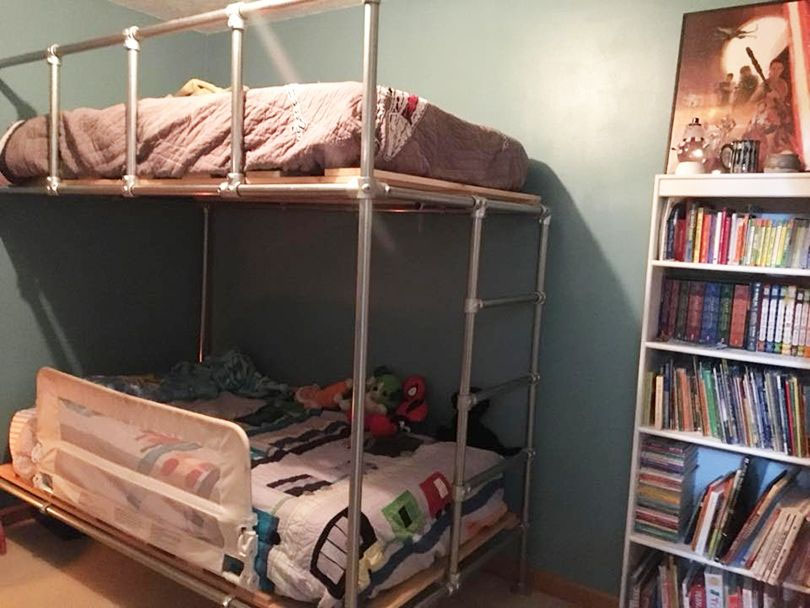
This bunk bed was built by David from Danville, Indiana. The entire frame was built using Kee Klamp fittings along with wood slats to provide mattress support. The fittings used in this project include the Single Socket Tee, Flange fitting, 90 Degree Side Outlet Tee, and the 90 Degree Elbow.
When speaking of the project, David had this to say:
“The bed came out just as we planned. The best part is that when they grow up, we can make them two identical Kee Klamp beds for when they start college or move out.”
In addition to the bunk bed, David also built a wall mounted shelf to match. Find full details on the shelf and bed frame here.
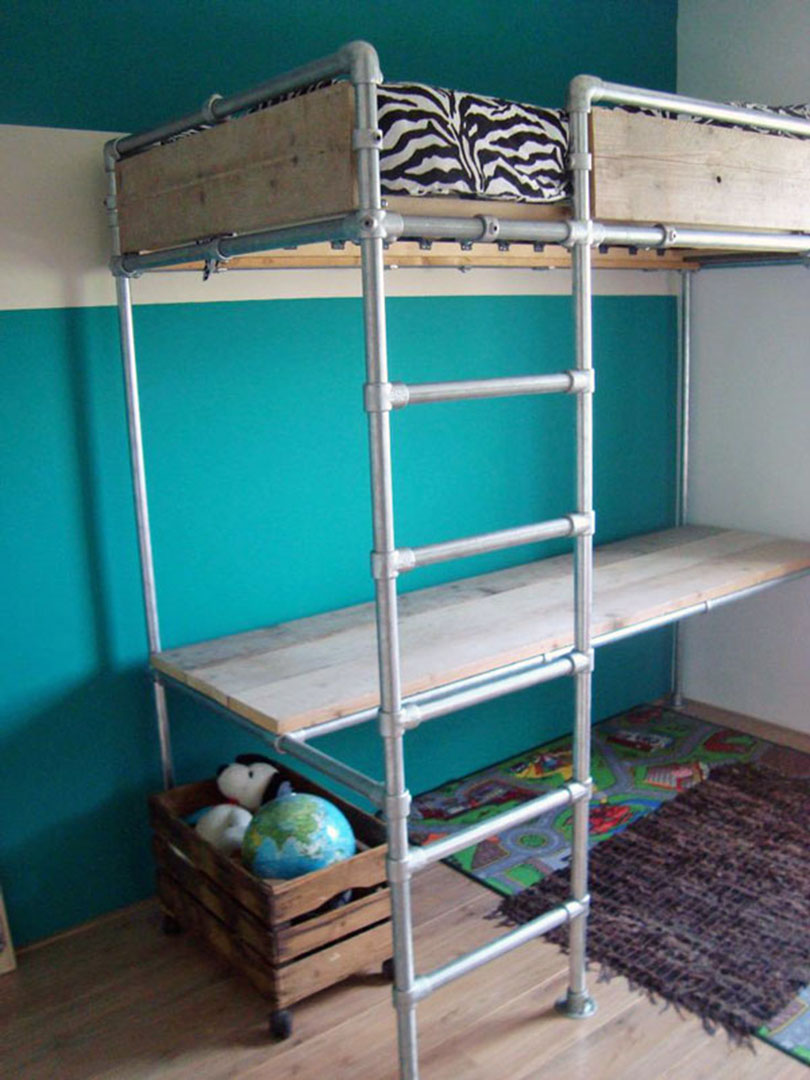
Featured in our article, “10 Unique DIY Kid Beds”, this loft-style bed features a bed on top with a desk and storage area underneath. However, the design could easily be converted into a bunk bed.
One unique feature of the bed are the wood panels attached to the bed railing. To attach these wood panels, the owner used Fixing Pads. These fittings slide over the metal pipe railing and have a tab on the other end with a hole in it that can be used for mounting platforms.
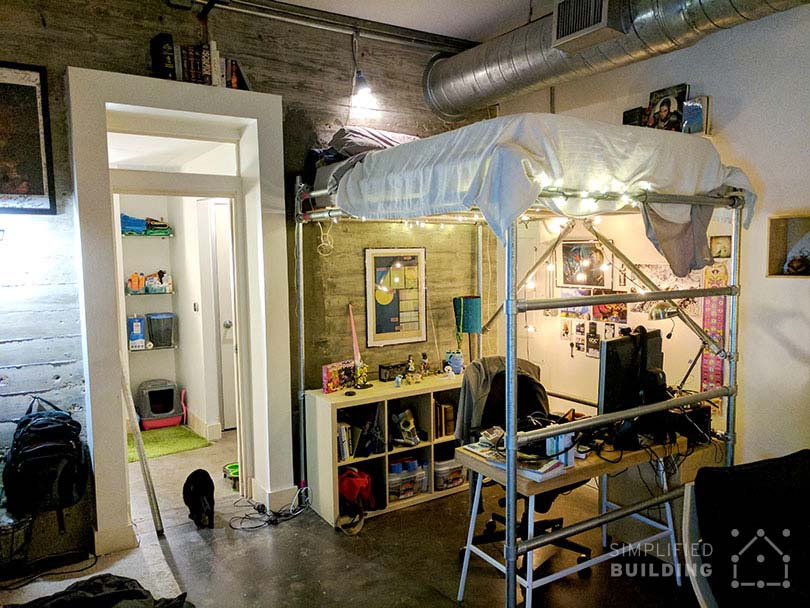
Here we have another loft-style bed frame that could be converted into a bunk. For now, the bottom area features a desk and a shelving unit for additional storage. The fittings used in this design include the Single Socket Tee, Flange fitting, 90 Degree Side Outlet Tee, and the Single Swivel Socket.
The Single Swivel Socket is used at the back of the frame to create the angle supports that provide additional strength to the structure. If you want to build a bed frame just like this one, you can find a full overview of the project, along with detailed plans and a parts list, in our article, “DIY Full-Size Loft Bed (with Plans to Build Your Own)”.
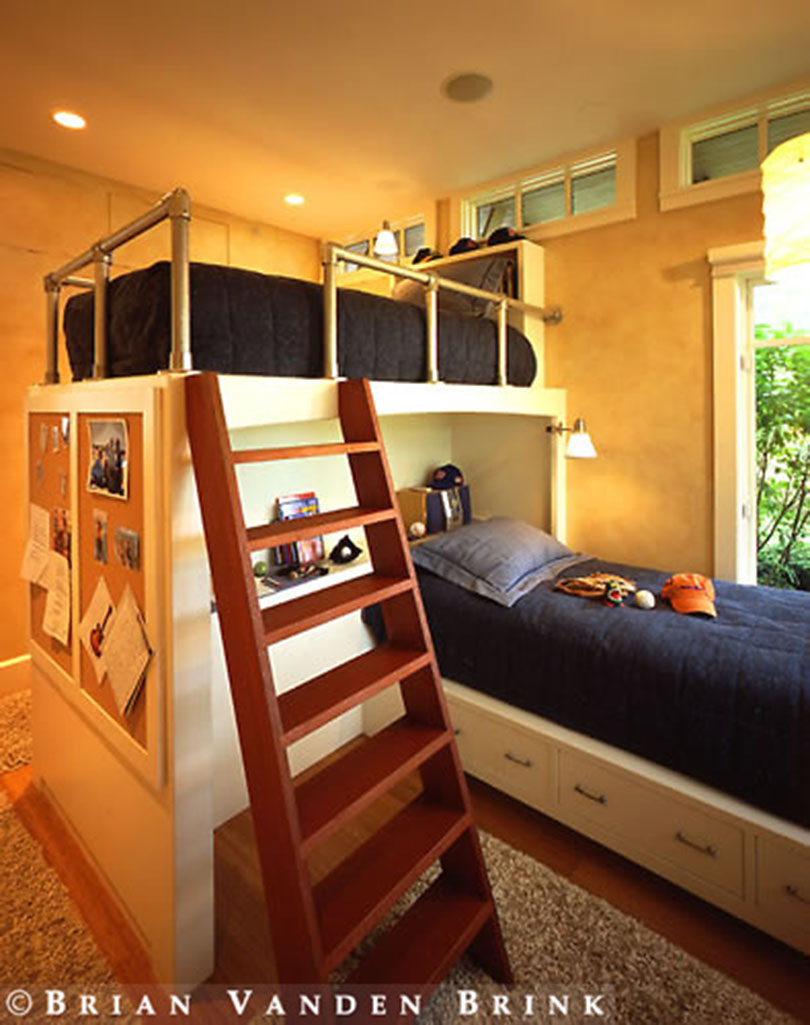
This bunk sports a “built-in” design yet makes use of pipe and fittings to create the bed railing for the top bunk. The fittings you need to create a similar railing include the Single Socket Tee, Flange fitting, and 90 Degree Elbow.
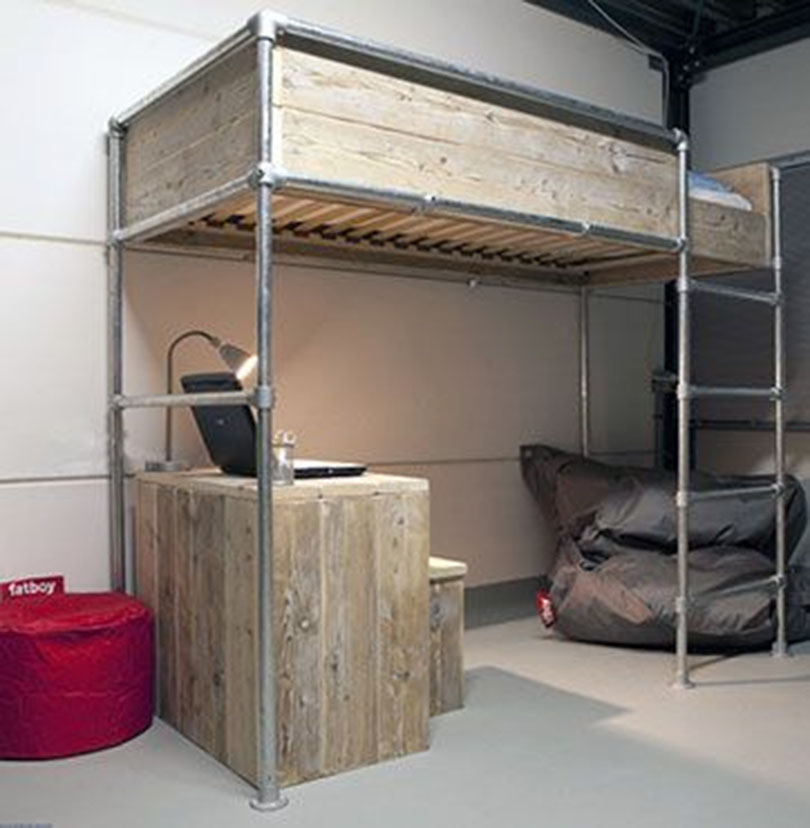
This loft-style bed frame features a desk underneath along with a bean bag for additional seating. However, the design could also be modified to include an additional bed frame.
If you want to learn how to put this exact frame together, full details for this project can be found here.
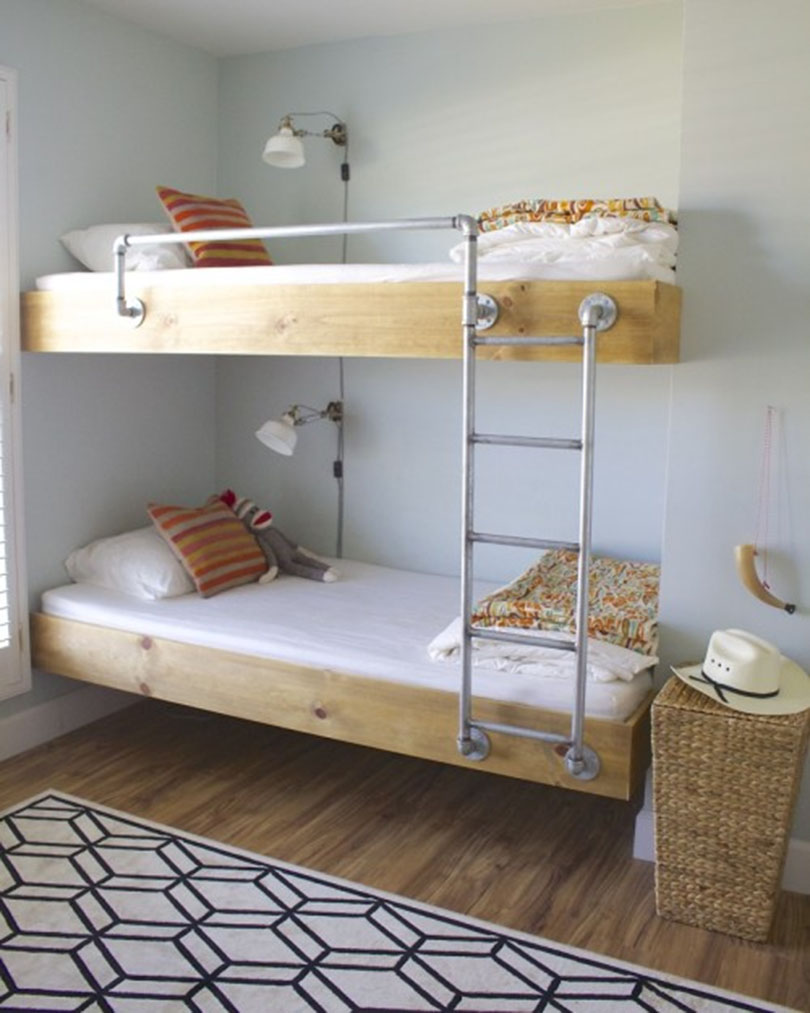
This wonderful built-in design comes to us from the “Design Sponge” blog. Both beds are attached to the wall while the bunk bed ladder was built using pipe and fittings. While the ladder uses traditional threaded pipe fittings, Kee Klamp fittings could easily be used instead to make the job easier.
One advantage of using Kee Klamp fittings over traditional pipe fittings is that they provide for some adjustability. For example, a ladder rung built with two Single Socket Tee fittings can be adjusted up or down the ladder to support, increasing or decreasing the distance between the next rung.
This can be helpful if you want to add more ladder rungs or decrease the spacing to make it easier for little ones to climb. All in all, this is a great looking project.
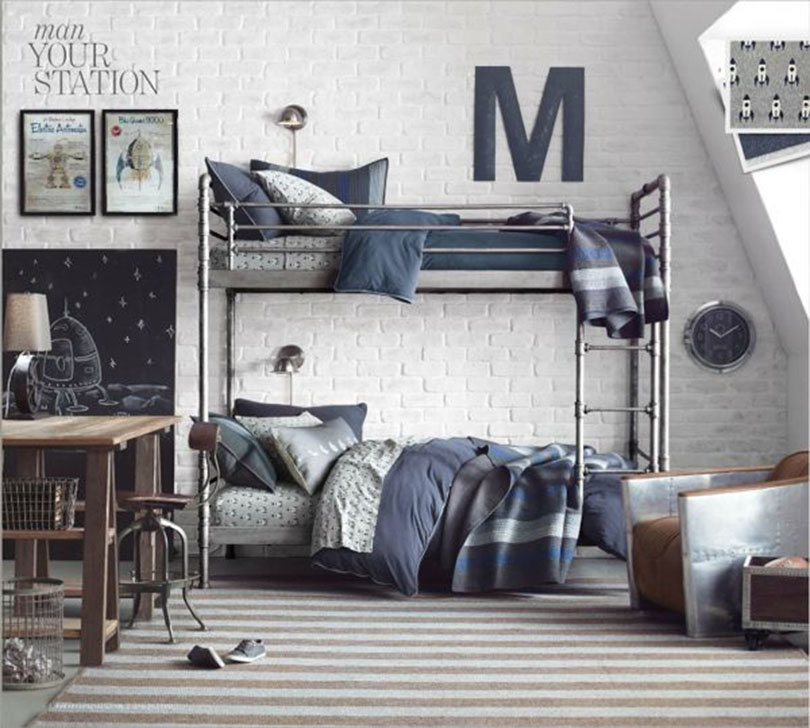
This bunk bed was built using traditional pipe fittings but could easily be replicated using the Single Socket Tee, Flange, 90 Degree Side Outlet Tee, and the 90 Degree Elbow fittings.
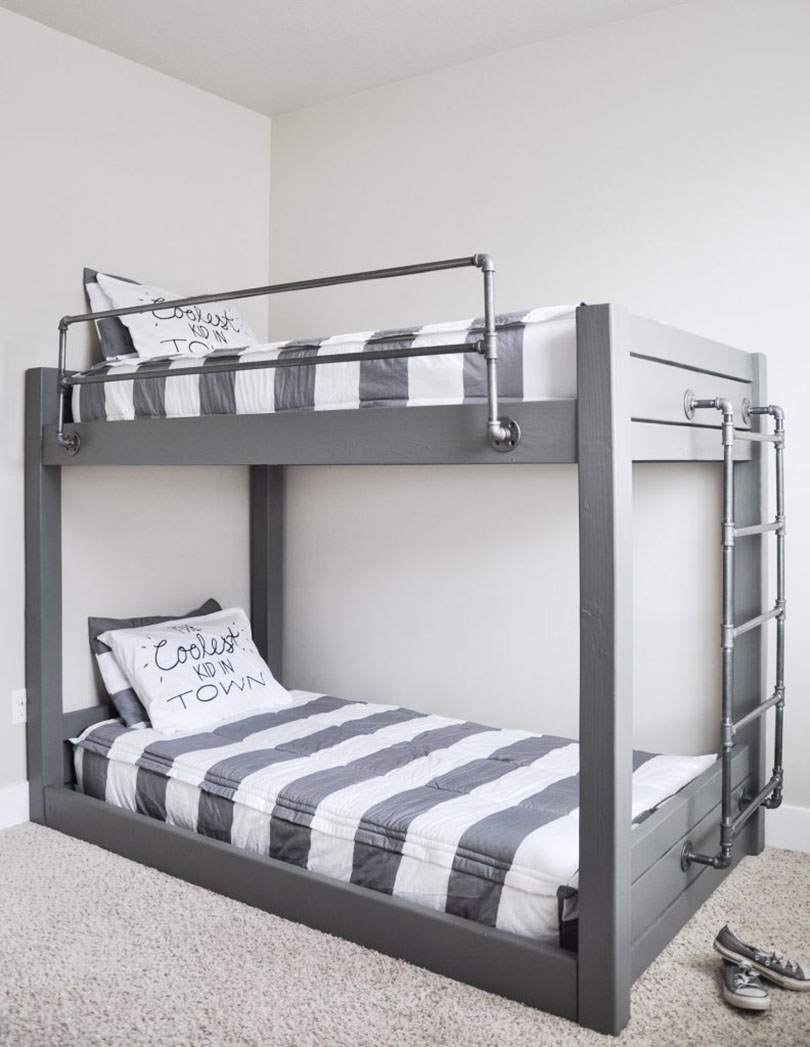
Here is another wood-built frame that instead of using pipe as the frame’s main building material, uses it to add the bunk bed’s ladder and railing. This type of design creates a nice bit of variety. To add the railing and ladder, you can use the Single Socket Tee, Flange, and 90 Degree Elbow fittings.

Here’s another bunk that appears to be a welded solution or built with traditional pipe fittings. However, the same design can be built with Kee Klamp using the Single Socket Tee, Flange, 90 Degree Side Outlet Tee, and the 90 Degree Elbow fittings.
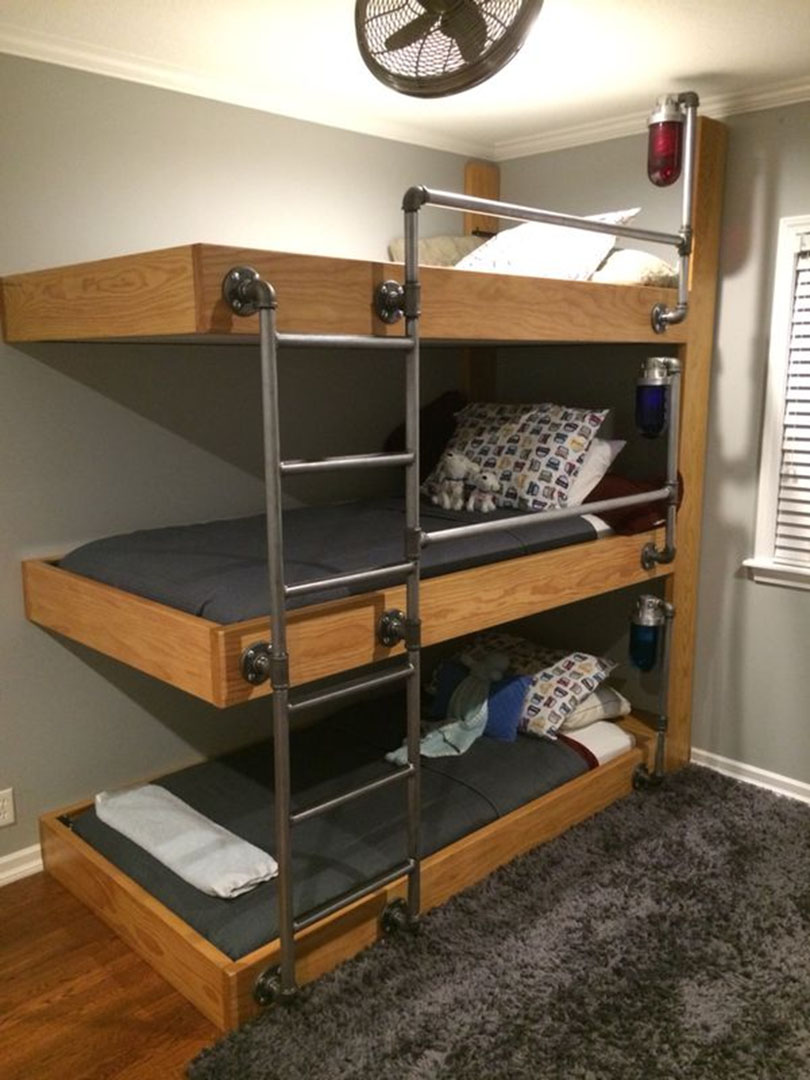
Here’s another design that uses pipe and fittings to add the ladder and railing to the bunk bed frame. This time, however, it’s for a bed that features three bunks! This type of setup definitely optimizes the room’s space and is super helpful in a house with multiple children.
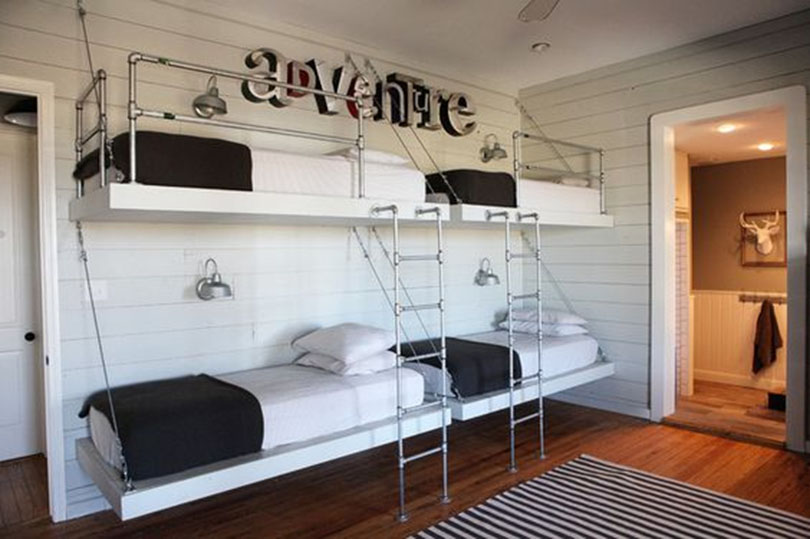
This room really capitalizes on the space, featuring two bunk beds for a total of four mattresses. This type of setup would be great for a house with a lot of children or even for a vacation rental.
The bed frames are mounted to the wall and use a cable set at an angle and mounted to the wall a little higher up to provide sufficient support to the frame. Traditional threaded fittings and pipe are then used to create the ladders and top bunk safety railing.
However, Kee Klamp fittings would make a great alternative. Another reason to use Kee Klamp is because of the fittings’ ease of use. Unlike fittings that use a threaded connection, Kee Klamp fittings slide over pipe and are secured in place by tightening a set screw. In general, this can make things easier to get level or consistent.
Kee Klamp fittings can also be relatively easily disassembled and reassembled by loosening the set screw on each fitting and disassembling the structure. When using threaded fittings, this process can be a bit trickier and more time consuming to complete.
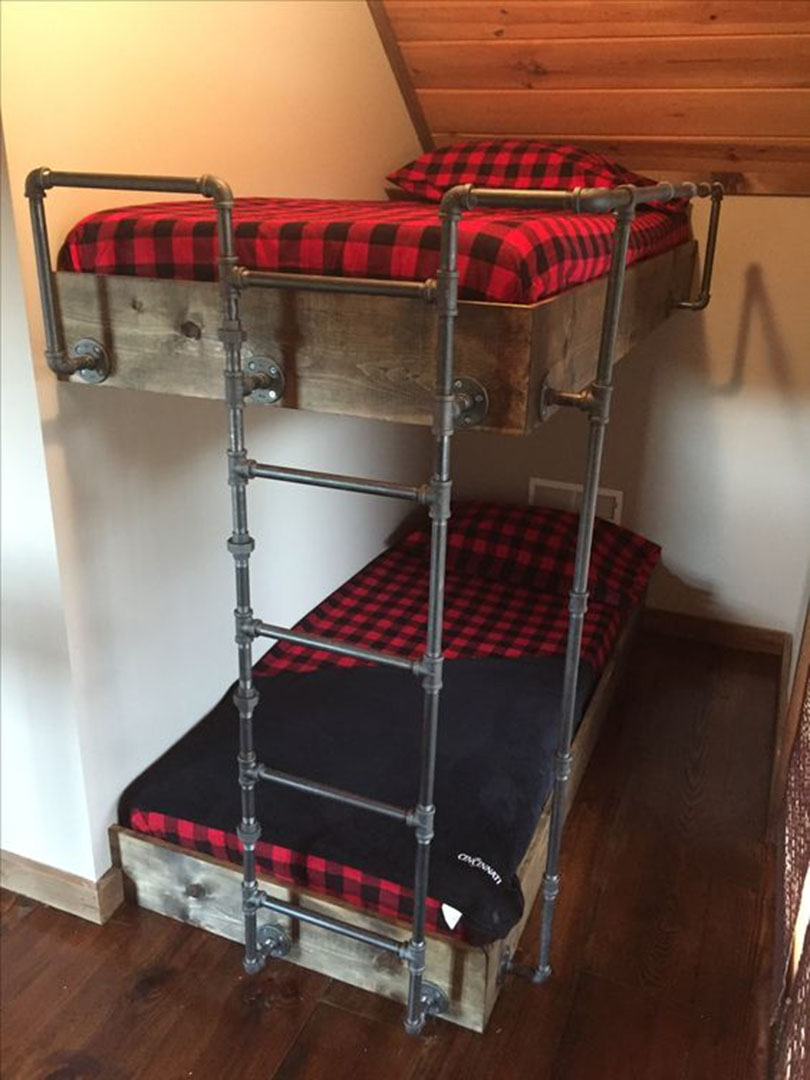
Here’s another design where the bunk bed frame is built from wood yet utilizes pipe and fittings for the railing. To build a ladder and safety railing like the one above, you can use the Single Socket Tee, Flange, and 90 Degree Elbow fittings.
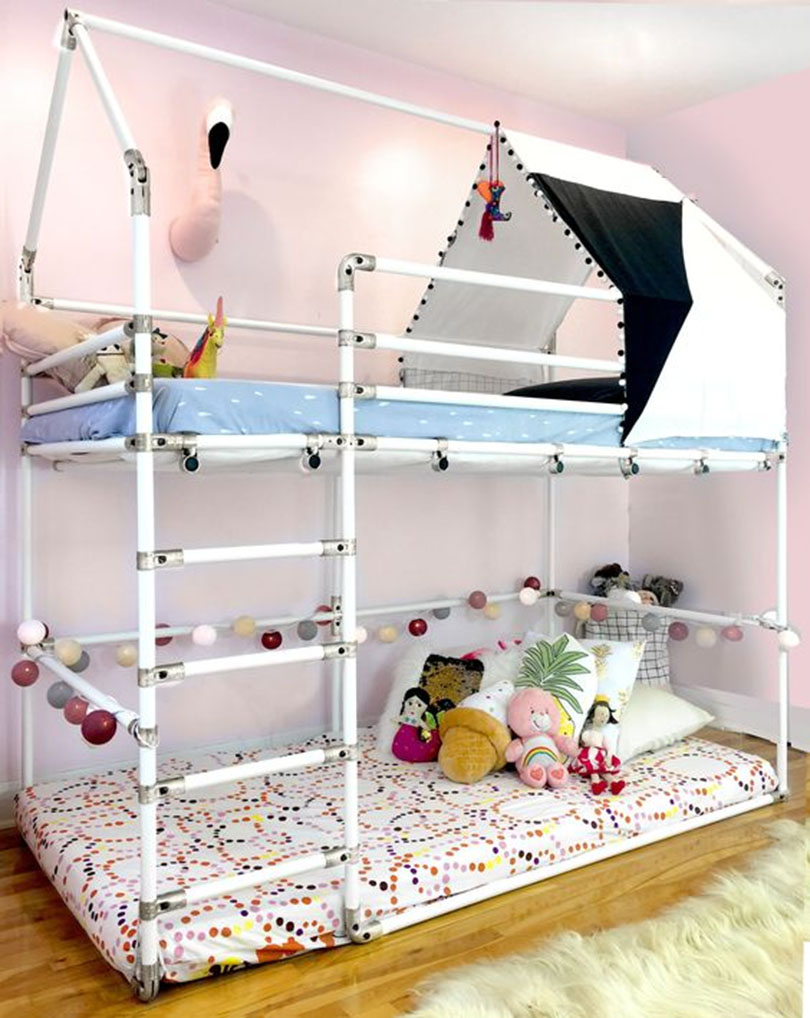
Now here’s a truly unique and elaborate design! This bunk bed was built entirely from pipe and fittings to resemble a house.
The design does use a large amount of pipe and a number of fittings, so it won’t be the cheapest option. But if you want to create a magical experience in your child’s bedroom, it might just be the perfect fit for you.
While this exact design doesn’t use Kee Klamp fittings, you can create the bed frame using the Single Socket Tee, 90 Degree Elbow, 90 Degree Side Outlet Elbow, Swivel Elbow, and 11 to 30 Degree Acute Angle Elbow fittings.
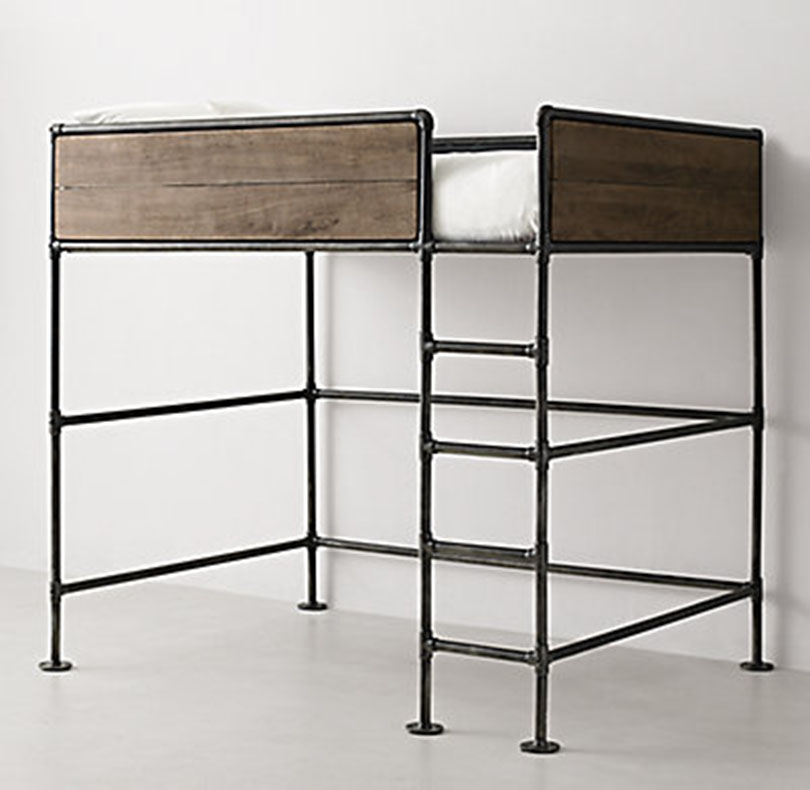
This loft-style bed frame is similiar to a design featured earlier. The entire frame was built using pipe and fittings. The top railing also features wood panels to complete the look. The bottom area can be used to add a desk, additional storage, or even another bed frame.
If you want to build a bed frame like the one pictured above, check out this article for step-by-step plans.
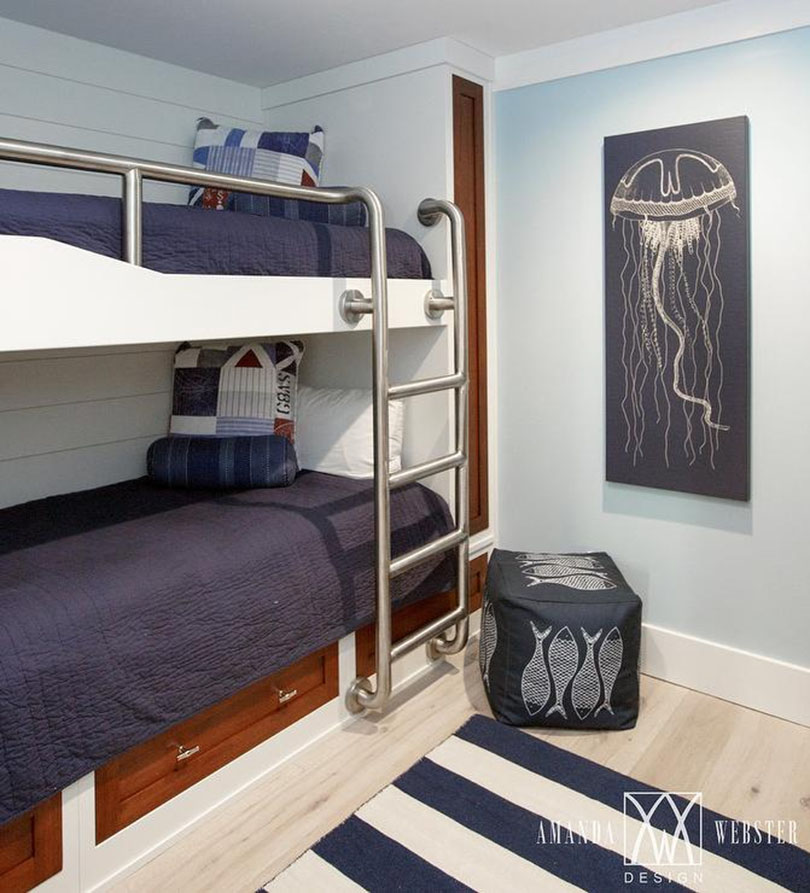
The metal railing on the bed frame is actually a welded solution. However, the look can be achieved using the Single Socket Tee, Flange, and 90 Degree Elbow fittings.
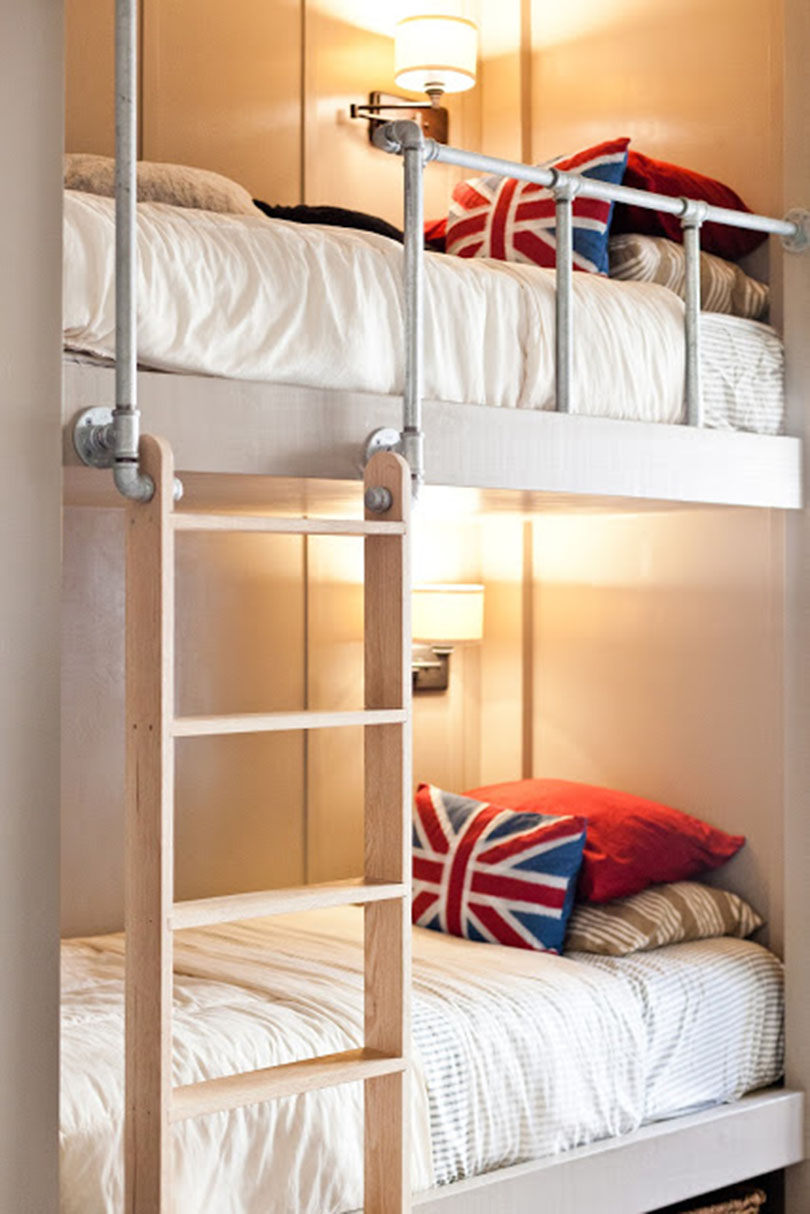
Here’s another “built-in” bunk bed built primarily from wood. However, the safety railing up top and part of the ladder were built using fittings and pipe. To create a similar look, you can use the Single Socket Tee, Flange, and 90 Degree Elbow fittings.
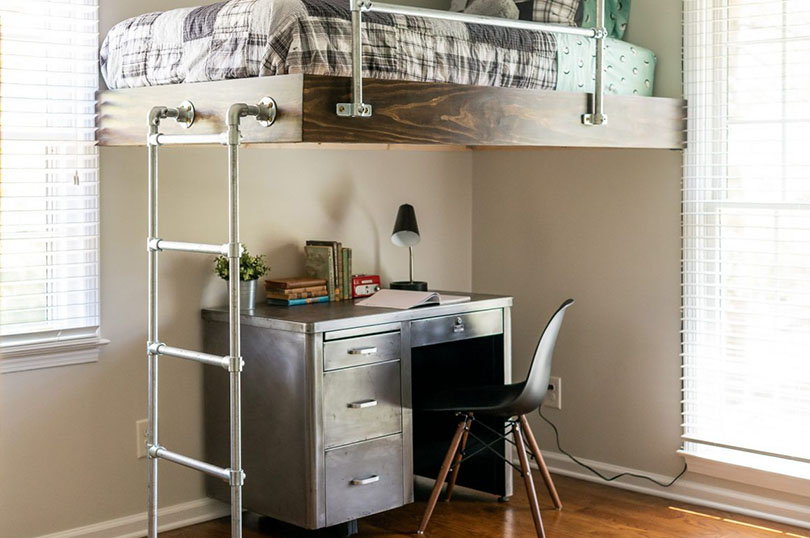
This lovely loft-style bed frame is brought to us by the “You Can, Man” blog. The frame is built primarily from wood yet uses fittings and pipe for the ladder and safety railing up top. If you want to see how the owners built this exact bed, you can find a complete walkthrough of the project here.
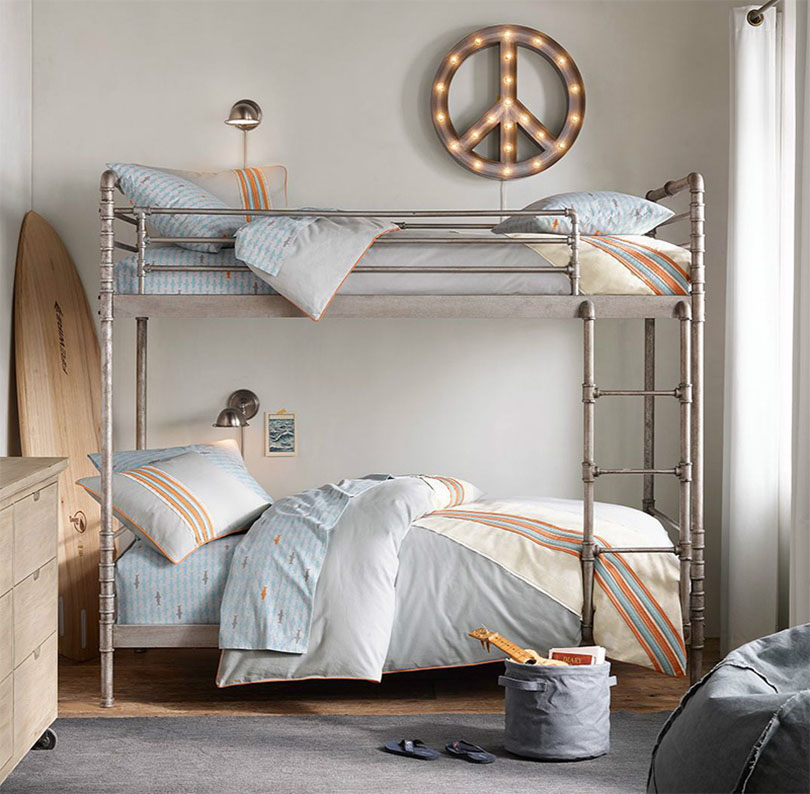
Here’s another bunk bed that appears to be built with traditional pipe fittings or as a pre-built, welded product. In either case, the same bed can be built using Kee Klamp fittings.
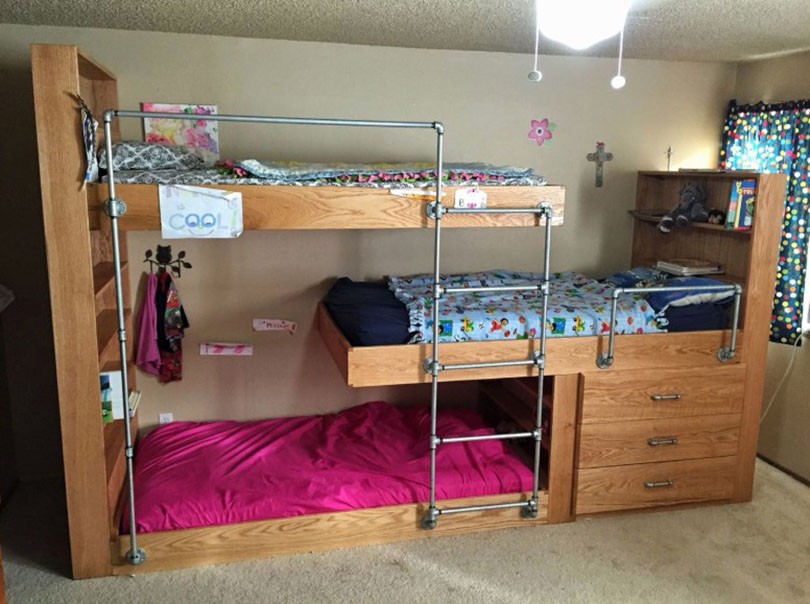
This bunk bed is built primarily from wood yet uses pipe and fittings to add the ladder and other safety railing. The bed even features shelving and a “built-in” dresser.

Here’s another loft bed that could be easily converted into a bunk bed. The great thing about using Kee Klamp fittings is that the fittings and pipe can be reused for other projects.
So if the owner of this bed ever wanted to change up the design, they could very likely do it with the fittings they already have. Or, the entire bed frame could be dissembled and the fittings could be used to build a shelving unit, desk frame, or any other type of project you can imagine.
This is something that simply wouldn’t be possible with a pre-built store-bought bunk bed.

Here’s a loft-style bed that is mounted to the wall and uses a pipe railing for support. The pipe railing can also be used to slide down from the top bunk. To convert this design to a bunk bed, all you’d have to do is another bed frame below the loft. The fittings used in the current design include the Flange and 90 Degree Elbow.
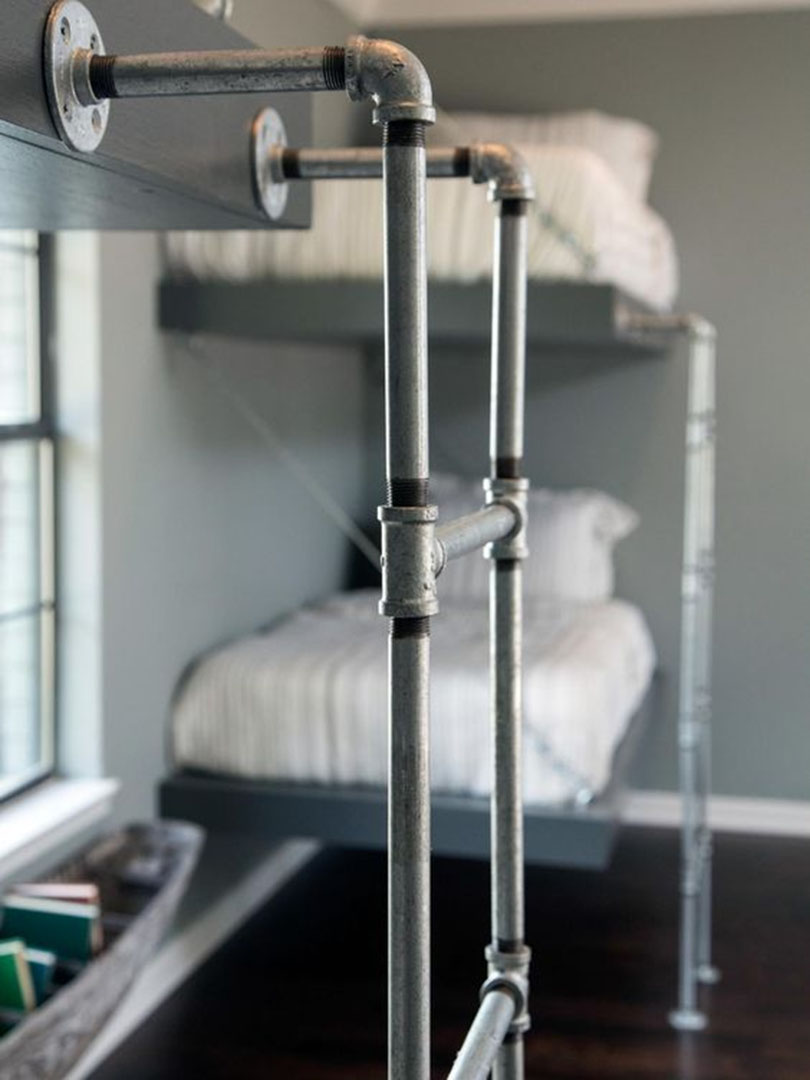
Here we can see that pipe fittings are used to create the ladder for this bunk bed. To recreate the look using Kee Klamp fittings, you’ll need the Single Socket Tee, 90 Degree Elbow, and Flange fittings.
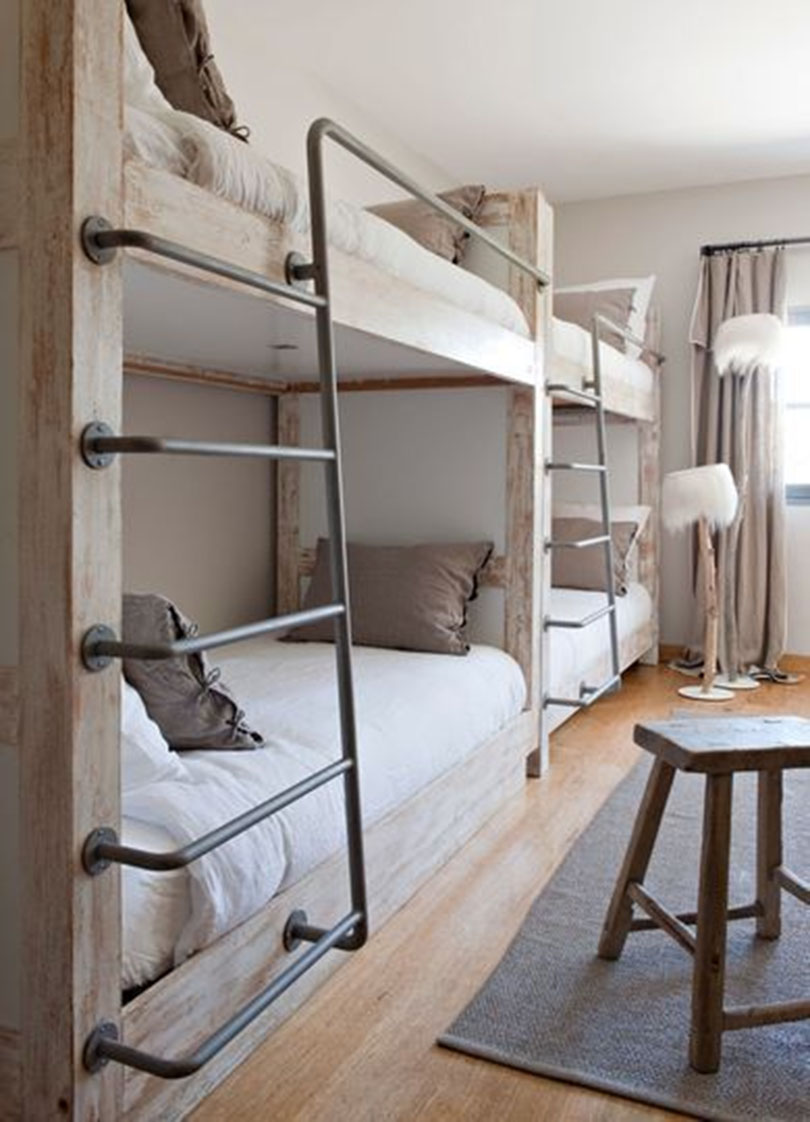
In this design, the railing is actually a welded solution, while the bunk bed is built primarily from wood. However, the ladder railing can be built using Kee Klamp fittings by utilizing the Single Socket Tee, 90 Degree Elbow, and Flange fittings.
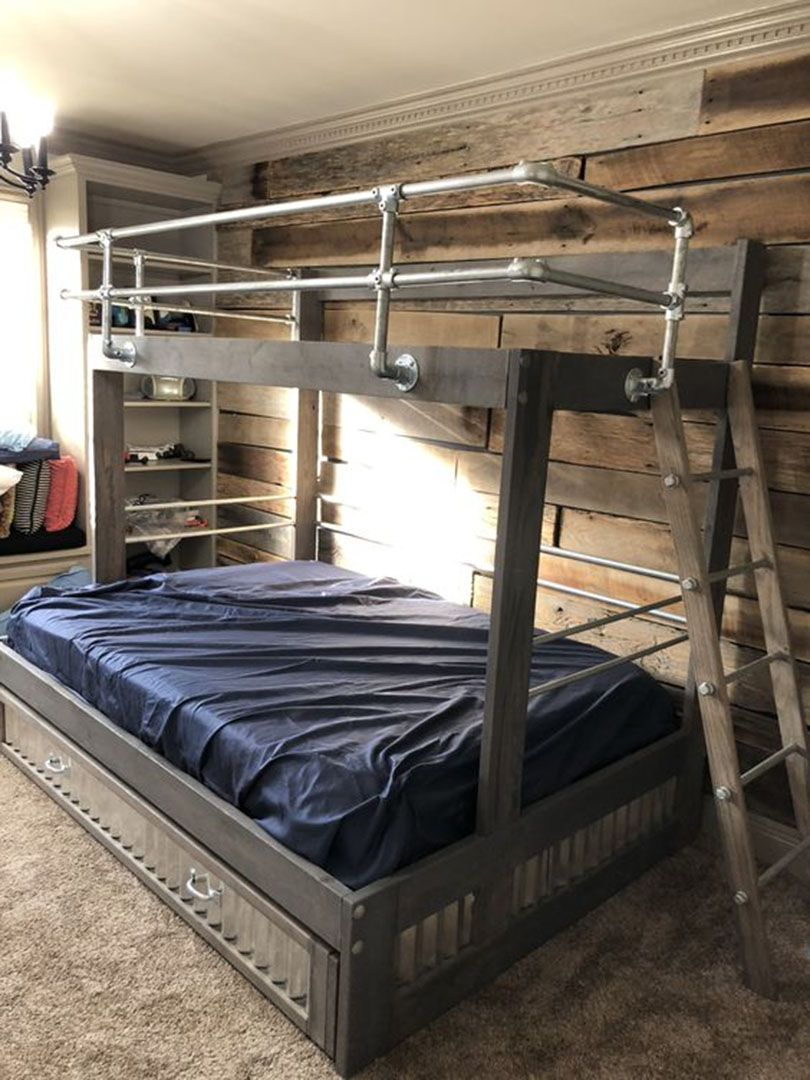
In this design, we can see that Kee Klamp fittings were used to build the top bunk safety railing, while the rest of the bunk bed is built primarily from wood. The lower bunk even features a few drawers for additional storage. The fittings used in the top railing include the Three Socket Tee, 90 Degree Elbow, Flange, and Two Socket Cross fittings.
Alternatively, the Single Socket Tee could be used in place of the Three Socket Tee. The main difference between the two fittings is that the Single Socket Tee allows for one section of pipe to slide completely through the open socket, while the Three Socket Tee allows you to join two separate sections of pipe in the same direction.

This bunk bed is actually used in a 1,000 sq. ft. farmhouse as part of an effort to maximize space and provide a place for the parent’s two boys to sleep. The bunk bed is a “built-in” solution built primarily from wood but uses fittings and pipe for the safety railing and bunk ladder.
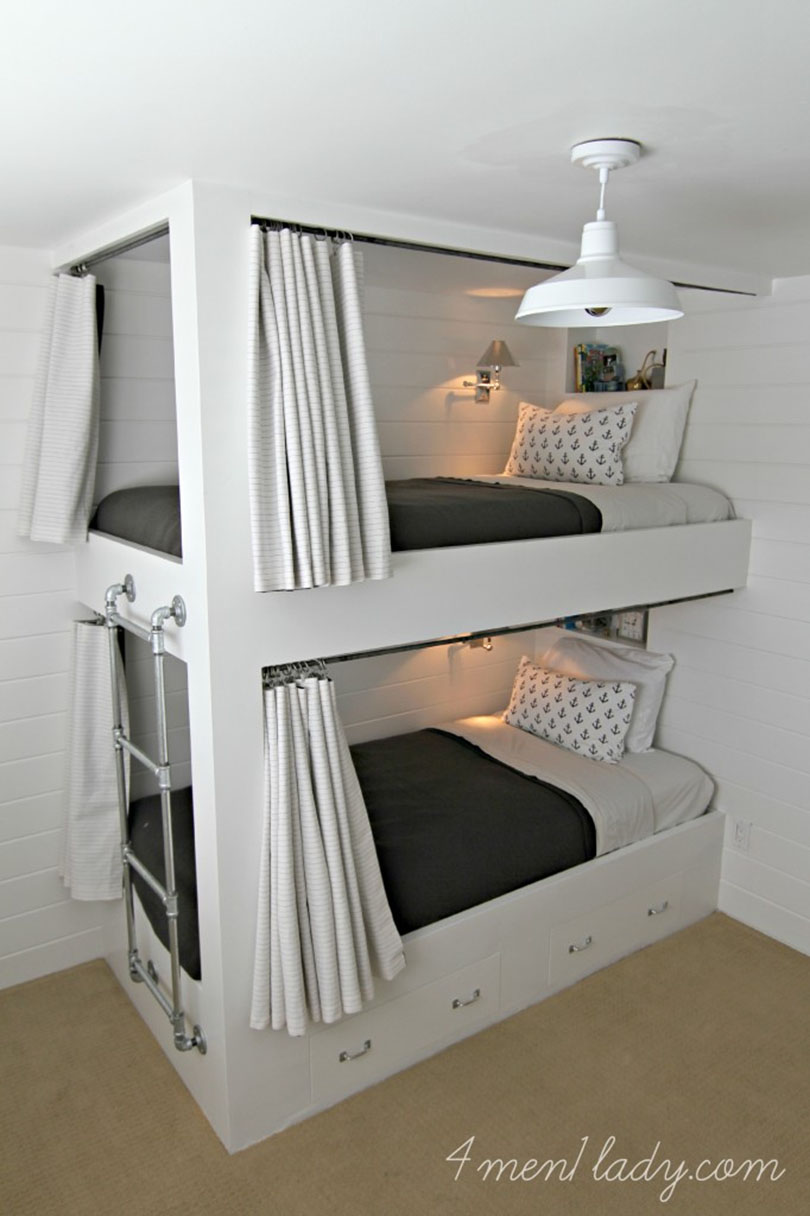
This bunk bed is brought to us from the “4 Men 1 Lady” blog. The entire bunk bed features a “built-in” design made out of wood but uses pipe and fittings for the bunk ladder. The bed even features a few drawers below the first bunk to provide additional storage and the curtains provide some privacy.
To recreate the ladder, you’ll need the Single Socket Tee, 90 Degree Elbow,and Flange fittings.
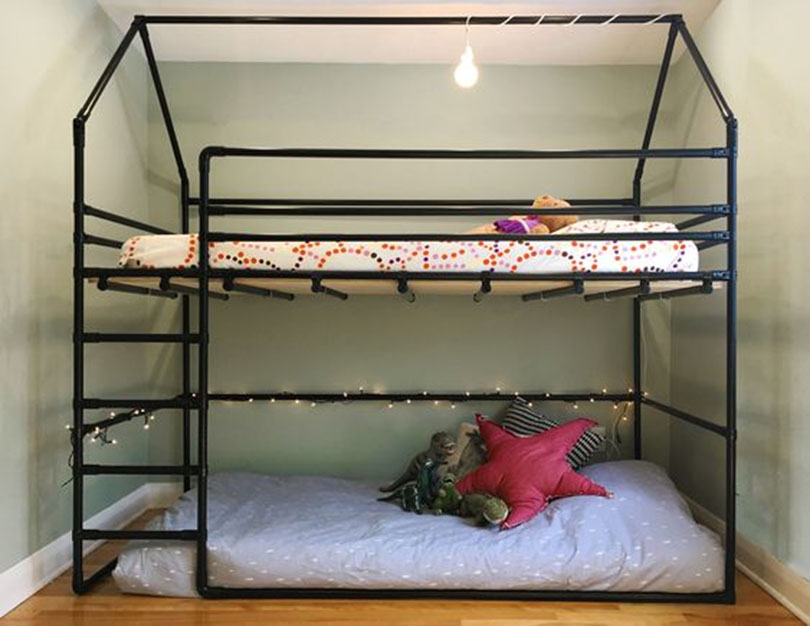
Here’s another take on the magical house-like bunk bed frame that we saw earlier. This time, the bed frame has been painted black and features strings lights to complete the look. To achieve the same color, you could spray paint the fittings and pipe or you might consider our powder coating service for a more ready solution.
The bottom mattress is simply placed on the floor, making it easy to convert this bunk bed into a loft should the owners ever want to switch things up.
To recreate the design, you can use the Single Socket Tee, 90 Degree Elbow, 90 Degree Side Outlet Elbow, Swivel Elbow, and 11 to 30 Degree Acute Angle Elbow fittings.

Here we have another wood built bed frame that uses pipe and fittings for the bunk bed ladder. To complete the look, you can use the Single Socket Tee, 90 Degree Elbow, and Flange fittings. From there, it’s just a matter of spray painting the components black or ordering the fittings and pipe in a black finish using our powder coating service.
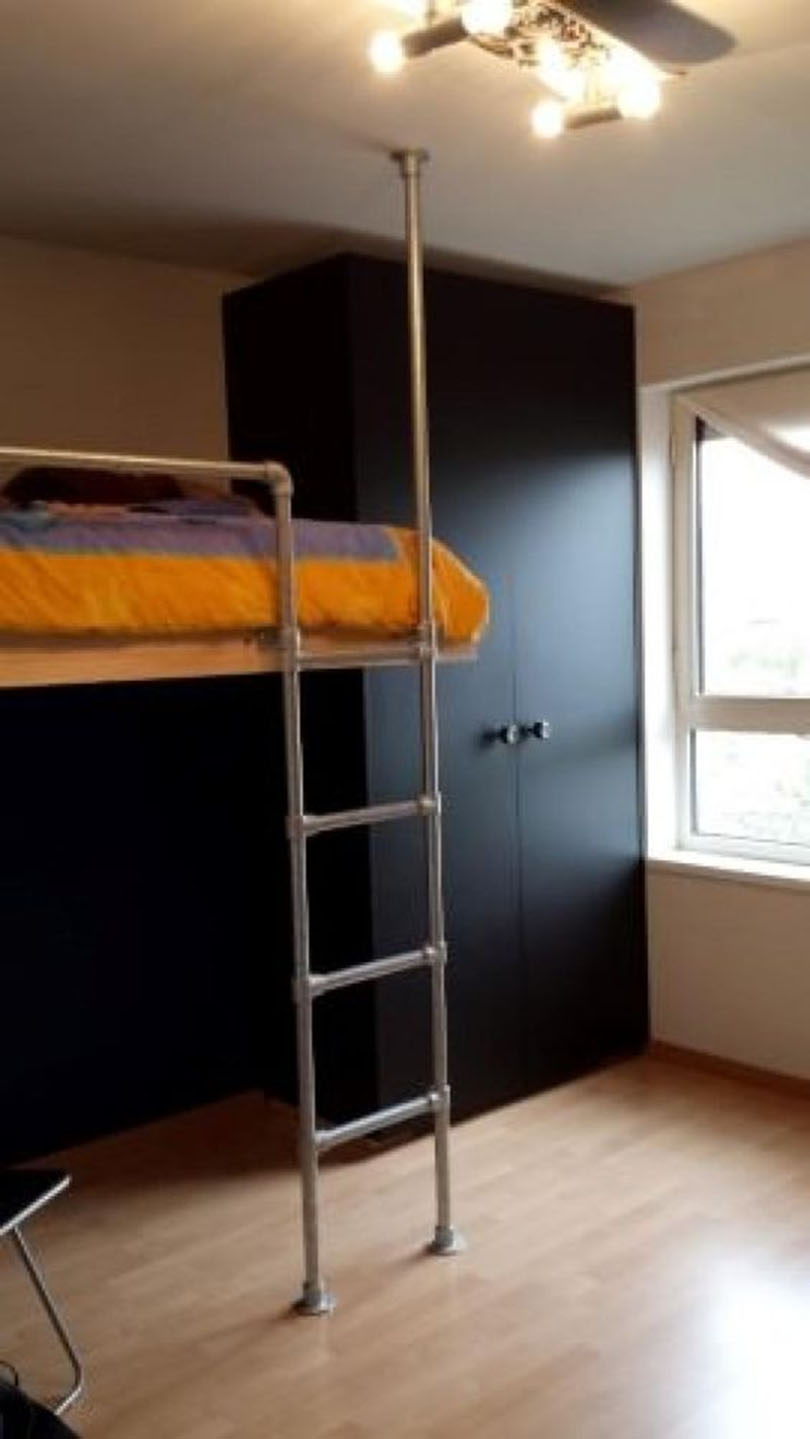
In this unique loft-style design, the bed frame is supported by the pipe ladder which is mounted to both the ground and ceiling. The floor-to-ceiling pipe definitely adds a nice touch but also provides additional support to the frame. To recreate the look, you can use the Single Socket Tee, 90 Degree Elbow, and Flange fittings.
Build Your Own Bunk Bed with Kee Klamp
Looking through this list, we’ve seen quite a few impressive designs that utilize pipe fittings. All of which are possible to build on your own. With the right fittings, building your own bunk bed can be a breeze and you’ll have your own custom bed frame that suits your needs perfectly.
Using Kee Klamp fittings really helps to streamline the process and provides many advantages over traditional threaded fittings, including:
- Kee Klamp fittings allow for adjustability. Since the fittings secure in place using a set screw, there is some play in the connection before you tighten down the fitting. This generally makes the fittings easier to use and get into position. It also enables some areas of a structure to be adjustable. For example, a ladder rung can be adjusted up or down in height by loosening the fittings, repositioning the rung, and securing the fitting back in place.
- Kee Klamp fittings are super strong and sturdy. These fittings are built from galvanized steel and are used in all kinds of applications from railings to desk frames to parkour structures, you name it. Our customers have built countless different types of projects with Kee Klamp. You can count on their strength and durability.
- Kee Klamp fittings can be reused. If you buy a pre-built bunk bed from a store, it’s likely the frame will be welded and it’s only designed for one purpose: to be a bunk bed. But a bunk bed built with Kee Klamp fittings can be dissembled once it no longer has a use and those fittings can be used in other building projects.
If you’re ready to get started building your own bunk bed, try browsing our inventory of fittings to find the right ones for your project.
If you’re unsure of where to start and would like a little help, don’t hesitate to reach out to our team for help. We offer free design assistance and have worked with many customers to create something that fits their needs perfectly. Send us a message here or email our projects team at projects@simplifiedbuilding.com.


